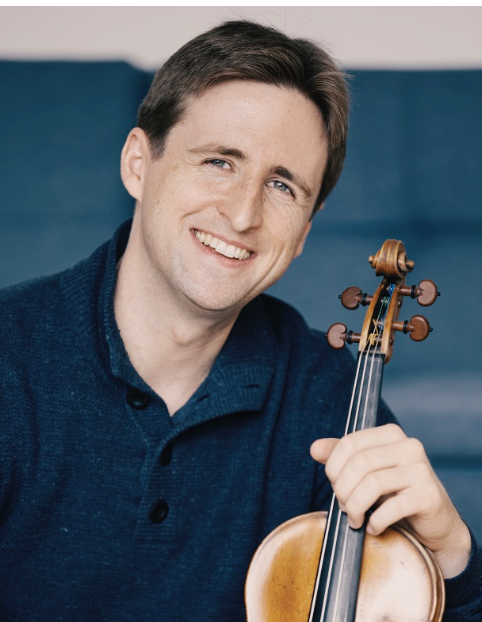|
Chamber
JASPER'S LUSH PERFORMANCES OF STILL, DVORAK AND FUNG QUARTETS
by Abby Wasserman
Sunday, November 10, 2024
Symphony
A SHOUT AND SONIC WARHORSES AT NOVEMBER'S SRS CONCERT
by Peter Lert
Saturday, November 9, 2024
Choral and Vocal
ECLECTIC WORKS IN CANTIAMO SONOMA'S SEASON OPENING CONCERT
by Pamela Hicks Gailey
Sunday, October 27, 2024
Symphony
FRANKENSTEIN THRILLS IN UNIQUE SO CO PHIL CONCERT IN JACKSON THEATER
by Peter Lert
Saturday, October 26, 2024
Choral and Vocal
BAROQUE EXTRAVAGANZA AT AMERICAN BACH MARIN CONCERT
by Abby Wasserman
Friday, October 25, 2024
Recital
LARGE AUDIENCE HEARS AX IN WEILL PIANO RECITAL
by Terry McNeill
Thursday, October 24, 2024
Symphony
SRS' NEW SEASON OPENS WITH BEETHOVEN AND COPLAND IN WEILL
by Terry McNeill
Saturday, October 19, 2024
Chamber
TWO CHAMBER MUSIC WORKS AT MARIN'S MT. TAM CHURCH
by Abby Wasserman
Sunday, October 13, 2024
CALLISTO'S ELEGANCE IN UPBEAT 222 GALLERY CONCERT
by Terry McNeill
Friday, October 11, 2024
Chamber
FINAL ALEXANDER SQ CONCERT AT MUSIC AT OAKMONT
by Terry McNeill
Thursday, October 10, 2024
|
 |
 Violinist David McCarroll |
SRS' NEW SEASON OPENS WITH BEETHOVEN AND COPLAND IN WEILL
by Terry McNeill
Saturday, October 19, 2024
Historically the Santa Rosa Symphony opens its first concerts of the season with a snare drum roll and the National Anthem, but at beginning of their Oct. 20 concerts there were solely stage announcements from Board Chair Keven Brown and President Andy Bradford.
However there was plenty of patriotism in Weill Hall with two Copland works, the Fanfare for the Common Man and the Lincoln Portrait. The three-minute Fanfare was uncommonly blasting brass and percussion, and the Portrait unfolded conventionally with fine solos by clarinetist Roy Zajac, flute trumpet duos and the narration by NPR personality Kai Ryssdal. The Orchestra sporadically covered the narration, though the Hall’s voice amplification was excellent.
In this 15 minute piece from 1942 the narrator is often standing silently in front of the ensemble during the long symphonic introduction. Mr. Ryssdal chose to enter stage right just in time for his first words, delivered fluently but alas not stentorian.
Also standing a long time was violinist David McCarroll as the Beethoven Violin Concerto that ended the first half has four-minutes of orchestral playing before his bow first hits the strings, though rarely a soloist will actually play with the orchestra. What does a soloist think during this wait? Fingerings in the Larghetto? Dinner selections after the concert? Mr. McCarroll chose to underplay the great solo part throughout, but fashioning a lovely interpretation with fast trills, deft control of pianissimo phrases and majestic projection of the themes.
There are a handful of first movement cadenzas that violinists adopt, and here the surprise was the extended cadenza written for the piano version of the D Major Concerto, transcribed for violin. Some thought it was Mr. McCarroll’s own work, but I think it was the transcription by Ferruccio Busoni. The timpani at times accompanies in the cadenza, in this case by Allen Biggs.
Technical aspects aside, the hardest hurdle here in pure intonation, the piece being one of the most transparent of all violin concertos save for those of Mozart. The soloist’s tonal security never failed him.
The sublime dreamlike second movement unfolded beautifully with conductor Francisco Lecce-Chong’s careful adjustment of dynamics providing subtle support. Horn playing in duos with the violinist was sonorous, and the short cadenza carried the music almost without pause into the Rondo – Allegro finale. The solo violin line, much in the high register, was in continual dialogue with the orchestra, the effect joyous where oboist Laura Reynold’s phrases joined Mr. McCarroll just after the short cadenza.
A raucous standing ovation and several curtain calls from the nearly sold out hall greeted the conductor and soloist. There was no solo encore.
Katherine Balch’s ten minute Musica Pyralis launched the second half in its West Coast premiere performance, following the composer’s remarks from the stage where she disclosed the composition was mainly her reaction to out-of-door sounds, colors and images. The mélange of sound and small climaxes featured much percussion (triangle, marimba, tam tam, wood block, kettle drums) and quick solo playing from the harp, piano and flute. Perhaps the piece will have longevity?
Unexpected after the Lincoln Portrait was a full orchestral encore, Copland’s snazzy and pungent Hoe-Down section from the 1942 Ballet Rodeo. The frantic performance brought the house down.
Daniel Greenhouse contributed to this review.
|

